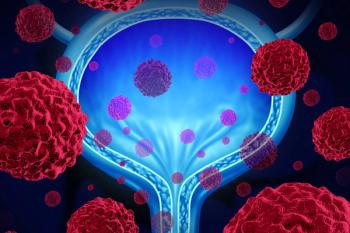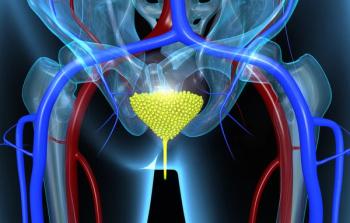
First-Line Pembrolizumab for Urothelial Carcinoma Offers Durable Responses
After extended follow-up, the KEYNOTE-052 study has shown that first-line pembrolizumab offers durable responses and no new safety signals in patients with cisplatin-ineligible advanced urothelial cancer.
After extended follow-up, the KEYNOTE-052 study has shown that first-line pembrolizumab offers durable responses and no new safety signals in patients with cisplatin-ineligible advanced urothelial cancer.
“We know that first-line cisplatin-based chemotherapy improves survival in this population, however, many of these patients-up to approximately half of all these patients-are unable to receive cisplatin-based chemotherapy, generally due to renal dysfunction and poor performance status,” said Peter H. O’Donnell, MD, of the University of Chicago Medical Center. The immune checkpoint inhibitor pembrolizumab has been shown to have activity in this malignancy, and the KEYNOTE-052 study was designed to assess that activity in the first-line setting.
O’Donnell presented extended follow-up results of the trial at the 2017 American Society of Clinical Oncology (ASCO) Annual Meeting in Chicago. It included a total of 370 patients with advanced urothelial cancer who had not previously been treated with chemotherapy and who were ineligible for cisplatin; all were treated with pembrolizumab for 24 months, or until confirmed progressive disease, intolerable toxicity, or patient withdrawal.
Patients had a median age of 74 years (29% were 80 years or older), and most had a primary tumor in the lower tract; 21% had liver metastases, and most were ineligible for cisplatin due to renal dysfunction (50%) or ECOG performance status of 2 (32%).
The objective response rate (ORR) in the full cohort was 29%, with 27 complete responses (CRs; 7%) and 81 partial responses (PRs; 22%); this was a 5% increase in ORR with longer follow-up over previous reports, with 10 additional CRs and 9 additional PRs. Another 18% had stable disease, while 42% had progressive disease.
Subgroup analyses showed similar responses through most subgroups, though those with lymph node metastases only appeared to have a higher ORR, at 49% (25 of 51 patients). In total, 58% of patients experienced a decrease in target lesion size. The median time to response was 2 months, and the median duration of response was not yet reached; at the time of data cutoff, two-thirds of responses were ongoing.
A PD-L1 expression analysis divided the patients into a training set of the first 100 patients, used to identify a cutoff score based on PD-L1 expression and the total number of viable tumor cells, and a validation set of all evaluable patients excluding the training set. Those deemed PD-L1 high had an ORR of 37%, compared with 17% in the PD-L1 low patients, in the training set; in the validation set, these rates were 51% and 23%, respectively.
A total of 70 patients (19%) experienced a grade 3-5 adverse event (AE). The most common included fatigue (2%), colitis (2%), muscle weakness (1%), alkaline phosphatase increase (1%), and others. One death was attributed to a treatment-related AE: myositis in an 83-year-old woman.
“After longer follow-up, results confirm that first-line pembrolizumab elicits clinically meaningful and durable antitumor activity in first-line cisplatin-ineligible patients with metastatic urothelial cancer,” O’Donnell concluded.
Jonathan E. Rosenberg, MD, of Memorial Sloan Kettering Cancer Center in New York, was the discussant for the session, and he stressed the modest toxicity in an older, sicker patient population. “Based on these data, pembrolizumab should also now be considered a standard of care for cisplatin-ineligible metastatic urothelial cancer,” he said.
Newsletter
Stay up to date on recent advances in the multidisciplinary approach to cancer.


















































































